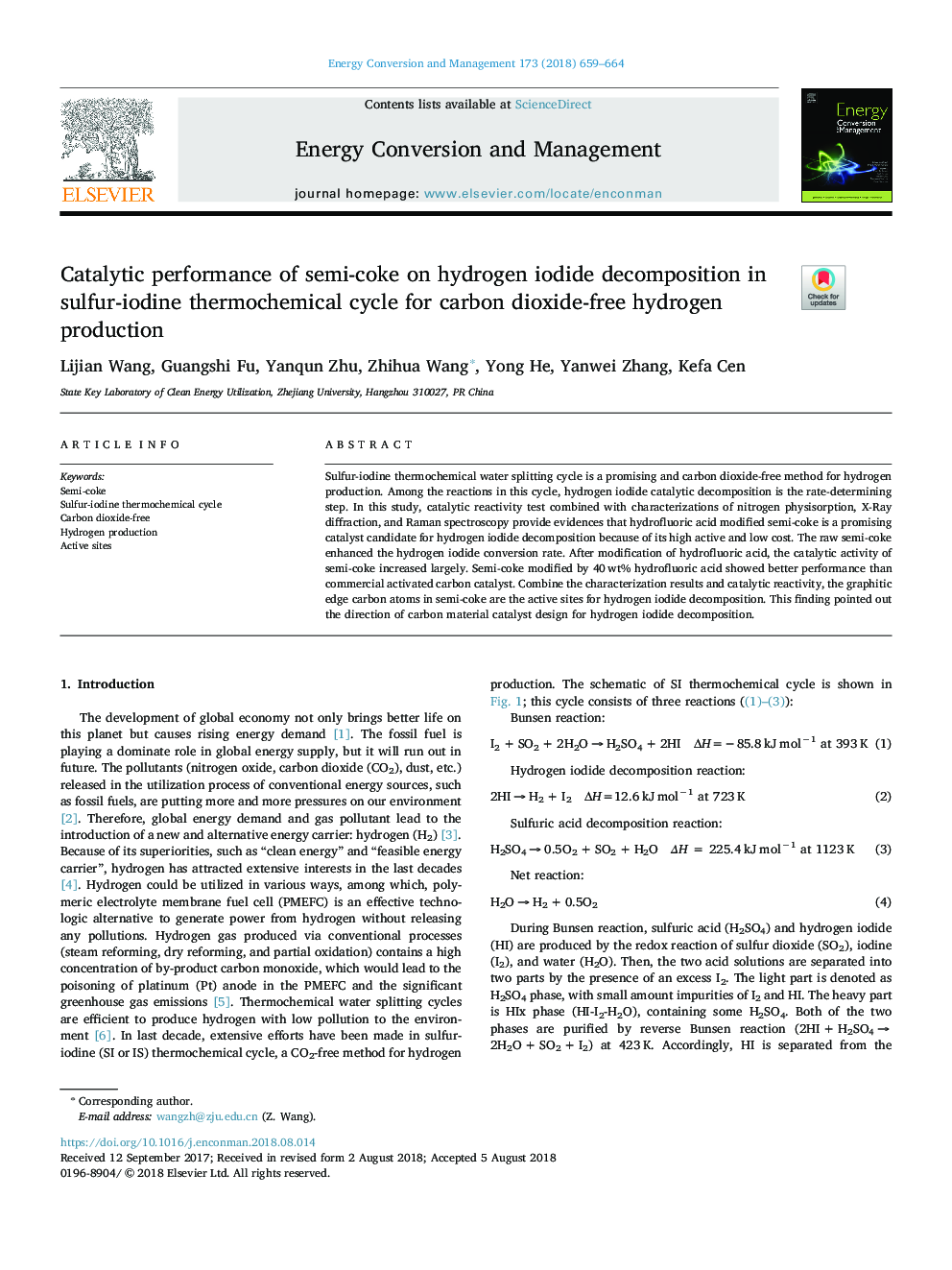| Article ID | Journal | Published Year | Pages | File Type |
|---|---|---|---|---|
| 7157825 | Energy Conversion and Management | 2018 | 6 Pages |
Abstract
Sulfur-iodine thermochemical water splitting cycle is a promising and carbon dioxide-free method for hydrogen production. Among the reactions in this cycle, hydrogen iodide catalytic decomposition is the rate-determining step. In this study, catalytic reactivity test combined with characterizations of nitrogen physisorption, X-Ray diffraction, and Raman spectroscopy provide evidences that hydrofluoric acid modified semi-coke is a promising catalyst candidate for hydrogen iodide decomposition because of its high active and low cost. The raw semi-coke enhanced the hydrogen iodide conversion rate. After modification of hydrofluoric acid, the catalytic activity of semi-coke increased largely. Semi-coke modified by 40â¯wt% hydrofluoric acid showed better performance than commercial activated carbon catalyst. Combine the characterization results and catalytic reactivity, the graphitic edge carbon atoms in semi-coke are the active sites for hydrogen iodide decomposition. This finding pointed out the direction of carbon material catalyst design for hydrogen iodide decomposition.
Related Topics
Physical Sciences and Engineering
Energy
Energy (General)
Authors
Lijian Wang, Guangshi Fu, Yanqun Zhu, Zhihua Wang, Yong He, Yanwei Zhang, Kefa Cen,
